-
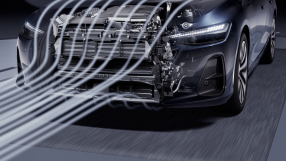
Audi A6 Sedan - Aerodynamics Audi A6 Sedan - Aerodynamics
Audi A6 Sedan - Aerodynamics
Aerodynamics: the best drag coefficient of an Audi with a combustion engine
The sporty and low design of the new Audi A6 Sedan contributes to its outstanding aerodynamics, ensuring a drag coefficient (Cd value) of 0.23. This is the best value of any series-produced model with a combustion engine in Audi history. Air curtains are used to ensure that the airflow around the front wheels and sides of the vehicle is as smooth as possible. These have been seamlessly integrated into the new design of the A6 Sedan*. Two separately controllable cool-air intakes behind the Singleframe radiator grille are part of the aerodynamics concept. They ensure optimized airflow around the engine bay. To harness the full potential of this technology, Audi has also optimized the seal between the bumper and the cooling unit, reducing airflow losses in this area by up to 70 percent. To achieve this, the air control elements were made significantly more rigid. The unified interface for the air intake and for engine cooling also contributes to improved airflow around the body. Furthermore, a front spoiler in the front bumper reduces front-axle lift and ensures better airflow around the underbody. In addition, numerous panels on the vehicle’s underside ensure controlled and harmonious airflow. These include wheel spoilers and specific covers on the transmission tunnel and rear axle.
04/25
- Available media:
-

-
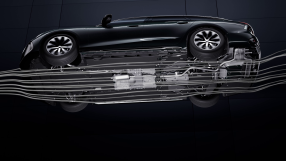
Audi A6 Avant - Aerodynamics Audi A6 Avant - Aerodynamics
Audi A6 Avant - Aerodynamics
The perfect interplay: design and aerodynamics
With its reduced design language, the A6 Avant conveys a functional and timeless character. This is reflected in both its design and the aerodynamics, which boasts a drag coefficient of 0.25 – the best value of a combustion-engine Avant at Audi.
In addition to the large air curtains and controllable cool-air intakes at the front, the striking roof spoiler and aerodynamic panels on the sides of the rear window are the main contributors to this achievement in aerodynamics.
The sporty rear with eye-catching diffuser embodies typical Avant characteristics. Paired with the quattro blisters powerfully emerging from the shoulder area and the wide track, the rear accentuates the model’s dynamic design. At the same time, its long wheelbase and extended hood embody elegance and round off the perfect proportions of the A6 Avant.
- Available media:
-

-
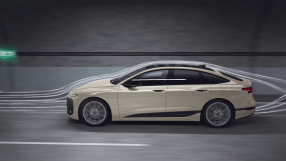
Audi A6 Sportback e-tron – Efficiency technologies and Aerodynamics Audi A6 Sportback e-tron – Efficiency technologies and Aerodynamics
Audi A6 Sportback e-tron – Efficiency technologies and Aerodynamics
Best in class: outstanding aerodynamics
Superior aerodynamics is a core component of the long history of successes for Audi. The aerodynamic heroes of the past, such as the Audi 100 (C3) and the Audi 80 (B3), also belong to the mid-size segment.- Available media:
-


-
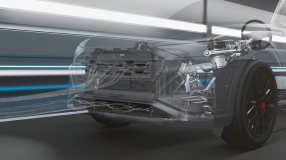
Audi Q8 Sportback e-tron – Active grill shutter Audi Q8 Sportback e-tron – Aerodynamics
Audi Q8 Sportback e-tron – Aerodynamics
Further improved aerodynamics
With the Audi Q8 e-tron*, the topic of aerodynamics was a top priority. This resulted in a reduction of the drag coefficient from 0.26 to 0.24 cw for the Q8 Sportback e-tron* and from 0.28 to 0.27 cw for the Q8 e-tron*. The wheel spoilers mounted on the underbody help divert airflow around the wheels. The spoilers on the front axle were enlarged, and the Audi Q8 Sportback e-tron* now has spoilers on the rear wheels as well. With the SQ8 Sportback e-tron*, spoilers are only mounted on the rear axle. In the area around the grille, this is the first time an Audi model has had a self-sealing system in addition to the electric shutters that automatically close the radiator. This system further optimizes the airflow at the front of the car and prevents undesired losses.
- Available media:
-

-
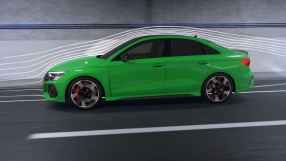
Audi RS 3 – Aerodynamics Audi RS 3 – Aerodynamics
Audi RS 3 – Aerodynamics
The design of the new Audi RS 32 is even more dynamic and powerful than that of its predecessor. In the front, the wide RS bumper, the redesigned Singleframe with its distinctive honeycomb grille, and the large air intakes give the compact sports car an expressive appearance.
- Available media:
-


-
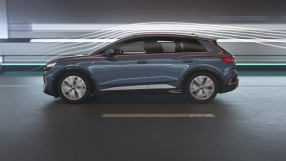
Audi Q4 e-tron – Aerodynamics Audi Q4 (Sportback) e-tron – Aerodynamics
Audi Q4 (Sportback) e-tron – Aerodynamics
The design of the two compact electric SUVs is full of character and impresses with the high quality of its aerodynamics. The Audi Q4 e-tron and the Q4 Sportback e-tron generate drag coefficients of 0.28 and 0.26 respectively, with the efficiency and range reaping the benefits.
- Available media:
-

-
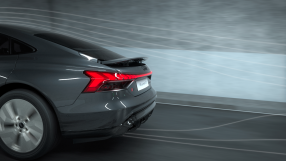
Audi RS e-tron GT – Aerodynamik EN -
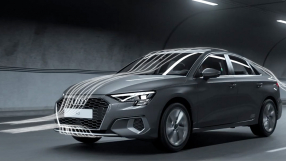
Audi A3 Sedan – Aerodynamics Audi A3 Sedan – Aerodynamics
Audi A3 Sedan – Aerodynamics
The aerodynamics benefit from the higher rear end compared with the predecessor as well as the large diffuser. As a result, the new A3 Sedan with the 2.0 TDI 110 kW (150 PS) achieves a Cd value of 0.25 and is therefore 0.04 Cd points better than the first generation.
- Available media:
-

-
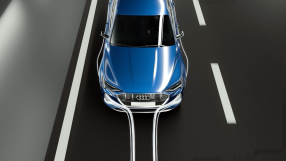
Audi e-tron S Sportback – Aerodynamics Audi e-tron S Sportback – Aerodynamics
Audi e-tron S Sportback – Aerodynamics
The airflow through the wheel arch trims helps Audi resolve the conflict of objectives between outstanding aerodynamics and sporty looks. For the first time, the brand with the Four Rings is bringing this innovative, patented solution to high-volume automobile production.
- Available media:
-


-
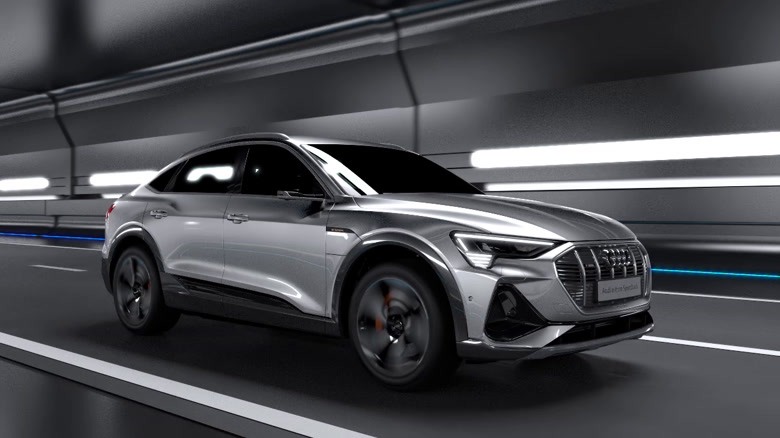
Audi e-tron Sportback - Aerodynamic -
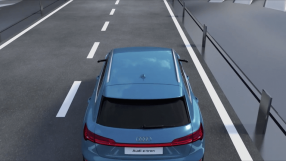
Audi e-tron – Acoustic -
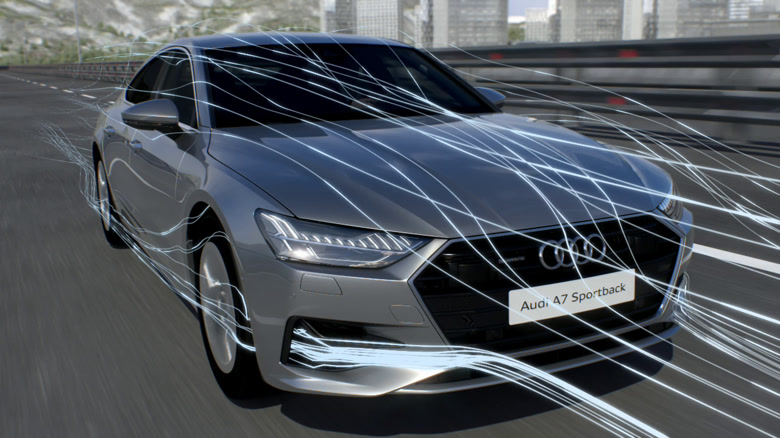
Audi A7 Sportback Aerodynamik_EN -
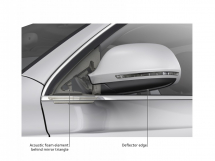
Aeroacustics
Aeroacustics
Low wind noise is an important comfort factor, particularly on the highway. At speeds of 120 km/h (74.56 mph), the whooshing of the wind is the loudest source of noise in the interior of many cars.
- Available media:
-

-
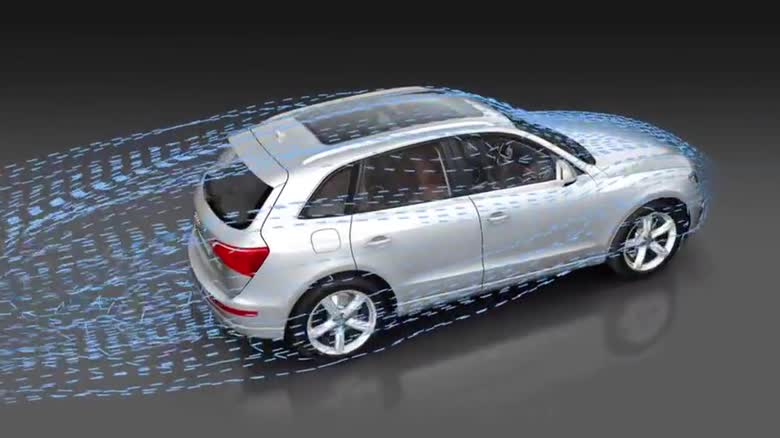
Air flow around the Audi Q5 Aerodynamics
Aerodynamics
Aerodynamic drag plays an important role in customers’ driving behavior. In cars such as the A8, which are used predominantly for long-distance travel, aerodynamic drag also accounts for almost half of the running resistance. Outfitted with the 4.2 FSI, the luxury sedan has a drag coefficient of 0.26 and a frontal area of 2.41 sq m (25.94 sq ft). Low lift coefficients at the front and rear axles ensure confident stability at highway speeds.
- Available media:
-


-
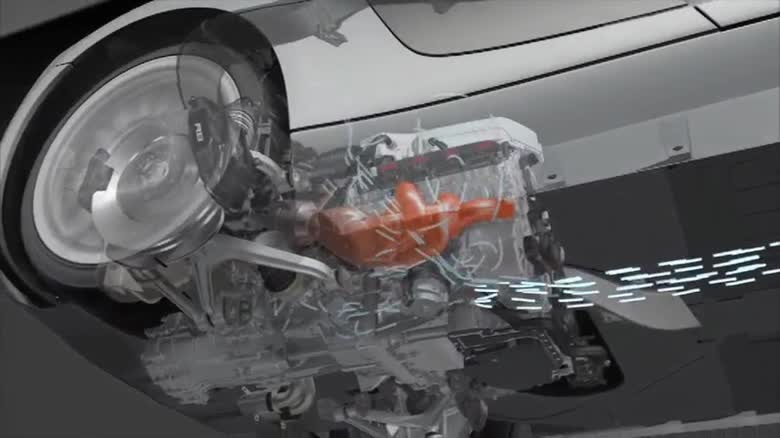
Air flow through the engine compartment Air flow through the engine compartment
Air flow through the engine compartment
The study of air flow through the engine compartment is a relatively recent branch of aerodynamics. In the new models, the area around the grille is thoroughly sealed so that the inflowing air reaches the radiator with virtually no losses instead of becoming turbulent.
- Available media:
-


-
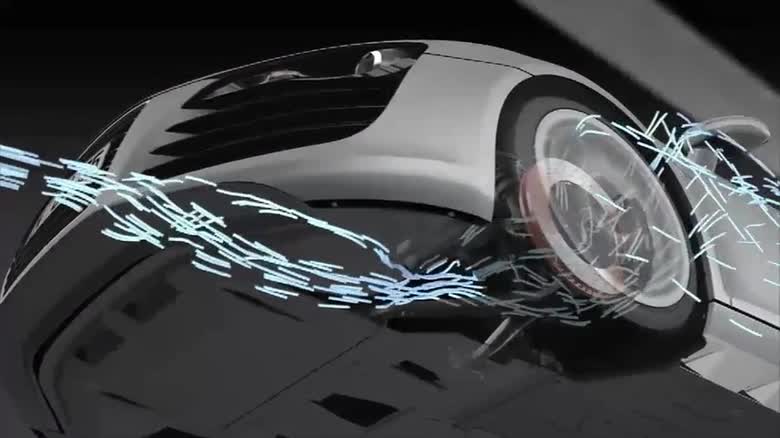
Underfloor of the Audi R8 Underbody
Underbody
A car produces 40 to 50 percent of its total aerodynamic drag in and around the underbody, the wheels and the wheel arches. Audi has an excellent tool for optimizing these zones – the aeroacoustic wind tunnel. With its rolling floor and the four small treadmills on which the wheels can turn, it provides insightful and detailed analyses.
- Available media:
-

